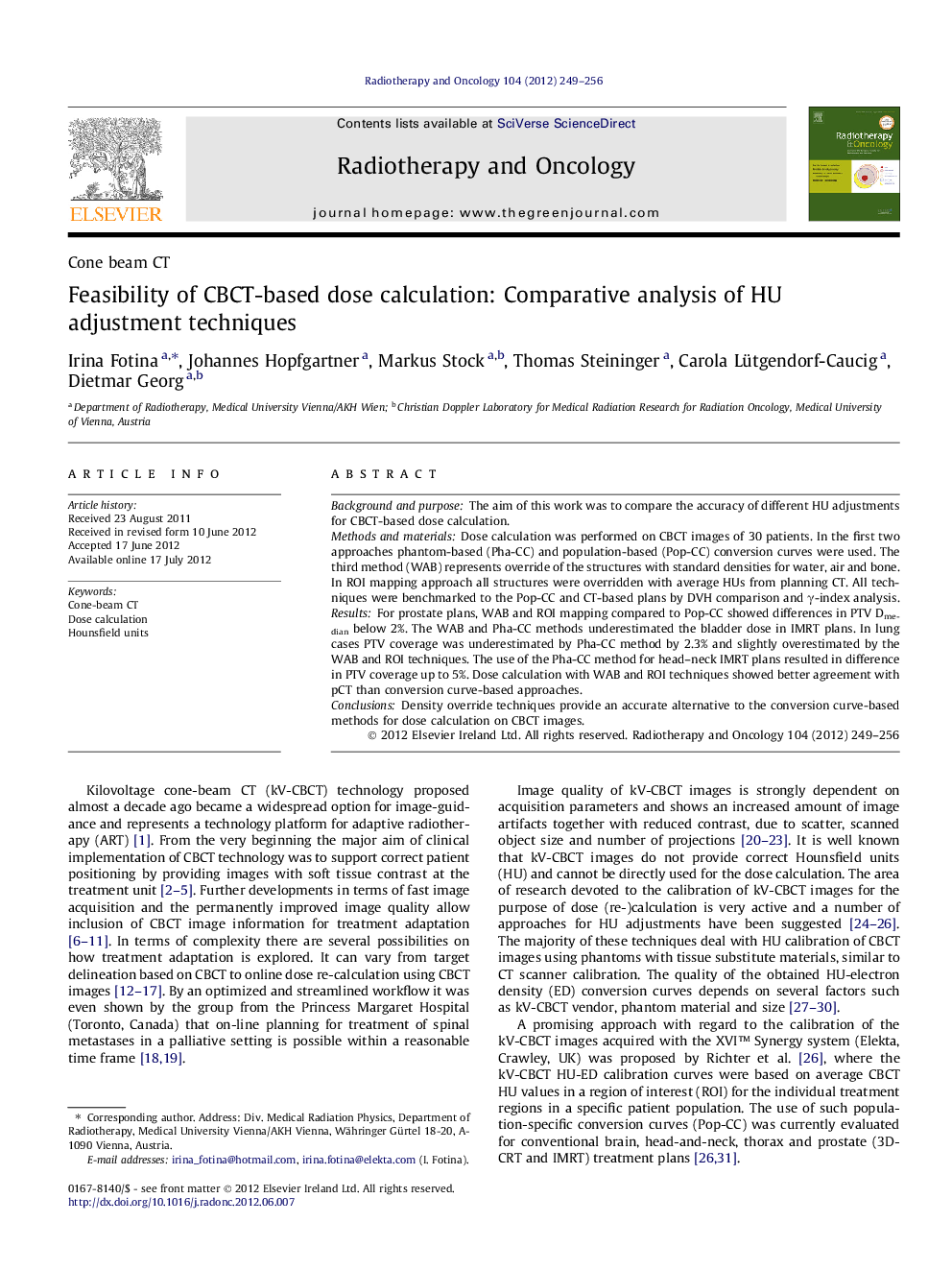| Article ID | Journal | Published Year | Pages | File Type |
|---|---|---|---|---|
| 2157801 | Radiotherapy and Oncology | 2012 | 8 Pages |
Background and purposeThe aim of this work was to compare the accuracy of different HU adjustments for CBCT-based dose calculation.Methods and materialsDose calculation was performed on CBCT images of 30 patients. In the first two approaches phantom-based (Pha-CC) and population-based (Pop-CC) conversion curves were used. The third method (WAB) represents override of the structures with standard densities for water, air and bone. In ROI mapping approach all structures were overridden with average HUs from planning CT. All techniques were benchmarked to the Pop-CC and CT-based plans by DVH comparison and γ-index analysis.ResultsFor prostate plans, WAB and ROI mapping compared to Pop-CC showed differences in PTV Dmedian below 2%. The WAB and Pha-CC methods underestimated the bladder dose in IMRT plans. In lung cases PTV coverage was underestimated by Pha-CC method by 2.3% and slightly overestimated by the WAB and ROI techniques. The use of the Pha-CC method for head–neck IMRT plans resulted in difference in PTV coverage up to 5%. Dose calculation with WAB and ROI techniques showed better agreement with pCT than conversion curve-based approaches.ConclusionsDensity override techniques provide an accurate alternative to the conversion curve-based methods for dose calculation on CBCT images.
